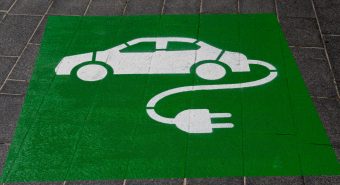
The Covid-19 pandemic has shown the essential role and necessity of transport, especially when the movement of people, goods, and services is severely limited. Before the crisis, continuous economic growth wasn’t harmonized with climate change, considering that today’s market economy was built on the dominant use of fossil fuels.
For a significant cut of this dependency of the economy on coal, it is crucial to make alternatives widely available and establish appropriate incentives for sustainable solutions.
The new way of thinking about public policy recognizes green mobility as the only way to transition to a green economy in approach and at the necessary scale. In December 2020, the EU adopted The Strategy for sustainable and smart mobility by which were established guidelines for sustainable and smart solutions in transport, aiming for at least 30 million vehicles with zero emissions of harmful gases to be on roads throughout Europe by 2030. Furthermore, the EU Green Deal calls for even a 90 percent reduction of greenhouse gas emissions that come from transport, with a view to reaching a climate-neutral economy in the EU by 2050.
Decarobonization of the transport sector is also one of the main pillars of the Green Agenda for the Western Balkans that has been supported by the leaders of the Western Balkans countries in November 2020 on the summit organized in Sofia within the Berlin process.
In focus:
The essence of e-mobility is promoting climate-neutral ways of transport. Although technological innovations, costs optimization, and favorable regulatory environment in more developed economies accelerated the expansion of e-mobility, in countries in development, that process is still just emerging. Undoubtedly, e-mobility comes with certain drawbacks such as higher prices of electric vehicles, initial capital expenses for electric charging, a longer time for battery charging, problems in traveling long distances, etc.
Given that, the economy of scale is vital for the extensive implementation of e-mobility. At the same time, the price of electric vehicles is closely connected to the expenses of lithium-ion batteries, which make for approximately 30 percent of the production costs. Due to the drop in batteries costs, the price of electric vehicles has significantly reduced over the last decade. On the other hand, the difference between electricity price and fossil fuels’ price has also become relatively small. It is not surprising that on a global level, electric vehicle demand is expanding.
How to encourage the implementation and usage of electric vehicles?
First, we need a straightforward course of public policy supported by powerful appropriate regulations to enable participation of the private sector, and that way to provide sufficient means to policy implementation with the following goals:
1. Stimulation of individual transition toward electric vehicles in the field of private cars and light commercial vehicles in urban areas (for example, financial subsidy for electric vehicles owners, perks in toll payment and parking favoring electric vehicles, possibility to use the bus lane, etc.)

2. Stimulation of commercial transporters for the economy of scale (introducing electric buses with batteries, promoting trams and trolleybuses with or without charging solutions, etc.)
3. Introduction of EV charging infrastructure.
Secondly, the key element for the development of electric mobility is promoting market economy principles and innovations. It is necessary so that the private sector can adjust and offer new innovative solutions in vehicle production and related supply chain. At the same time, besides electric vehicle production, we should work on other environmental issues such as investments in waste management and lithium-ion battery recycling.
In addition, it is vital to improving the grid to support the needed infrastructure for electric vehicle charging. The strategy for increasing electricity production from renewable energy sources will also require significant investments in the distribution network capacity that has to be sufficient enough for the projected growth in demand.
Prepared by: Dejan Zlatković, the regional economist at the EBRD for the Western Balkans
Read the story in the new issue of the Energy portal Magazine WATER RESOURCES.

